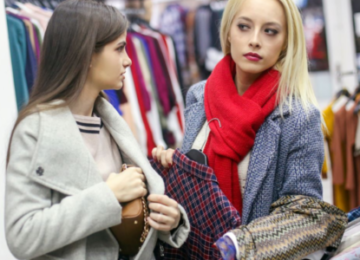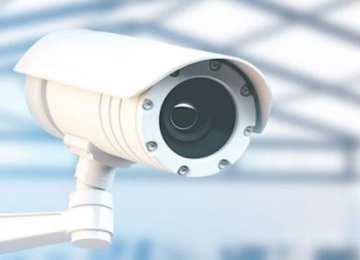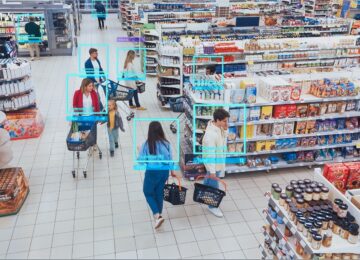What are the different types of in-store fraud?

Numerous cases of in-store fraud have been reported by the press in recent years. Employees and customers can be involved in a variety of scams. Here are the main ones, and we show you how Artificial Intelligence can help protect your store against them.
Frauds and scams identified in stores
Most frauds are linked to shoplifting. They consequently have a direct impact on shrinkage.
Fraud committed by store employees
One of the most common types of fraud is stealing goods from the store, particularly from the stockroom. These may be small items, but cases of high-price items being stolen have also been reported. These items are then resold on well-known internet marketplaces.
Another scam involves inflating the amount available on loyalty cards. Employees may decide to do this for their own benefit or for a friend or family member. The cards are then used to pay for items in the store, or in a different store of the same chain. A variation of this type of fraud involves the use of gift cards.
Sometimes one of the store’s cashiers is complicit in the scam, by blocking or failing to scan the barcodes on specific items. The customer (a friend or family member) goes through the checkout with a full trolley, but only a few items are actually scanned. The customer then leaves the store having paid for the goods, but only at a fraction of the real cost.
Fraud techniques used by shoppers
And when it comes to shoppers, the techniques they use are numerous and sometimes very inventive. The types of fraud mentioned here often manage to escape the attention of the store’s CCTV cameras, because they are discreet and skilfully carried out. They are sometimes undetectable for anyone monitoring the security screens, even to the trained eye.
Label switching is also worth mentioning. A shopper simply swaps the label or price tag with that of a similar, but cheaper, product.
Some shoplifters use special bags to avoid triggering security gates. Some bags may also have a fake bottom, where items can be concealed. Sometimes products are hidden in pockets and clothing.
How can Artificial Intelligence be used to combat in-store theft?
Installing security cameras is essential if you want to improve the security of your store, whatever the size of your retail business. However, this is not enough. You also need to be able to monitor the security screens at all times during the store’s opening hours. This means recruiting and rotating security staff.
To address these issues, Veesion has developed an Artificial Intelligence system that can be installed directly on your store’s existing cameras. How can this help retailers protect themselves from employee or customer scams? Well, thanks to AI, it’s possible to detect suspicious body movements and behaviour. The algorithm is trained to analyse all the body movements and gestures made by people in a store and to recognise ones that may appear suspicious.
As soon as any unusual behaviour is identified, a video alert is sent to the security manager or guards. It’s then possible to challenge the suspected individual, with the video footage in hand to back up the charge. The store manager can then try to reach an arrangement with the individual: giving the choose either to return or pay for the goods. The store may also decide to file a complaint with the police. If the individual is an employee, the manager may choose to impose disciplinary sanctions or even dismiss the person.
AI is easy to use, with no need to buy additional hardware. The store manager simply needs to ensure that the cameras are placed in the right locations (e.g. aisles, high-traffic areas, and stockrooms). But be aware that there are legal regulations that need to be complied with. For example, it’s illegal to place cameras in fitting rooms. It’s possible to install a camera at a checkout, but this must respect the employee’s privacy.
It should be noted that the AI developed by Veesion is not based on a facial recognition algorithm. It does not seek to identify or collect information about an individual. Only an individual’s body movements and gestures are analysed. And that's how it’s able to detect fraud-related behaviour in a store.
The most popular
Related news
Discover what Veesion can do for you. Do you have one or more stores?
Our team will contact you within 48 hours





